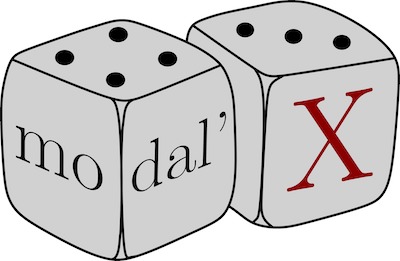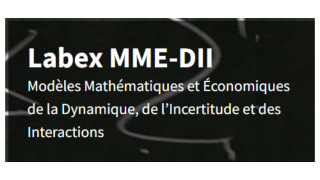[Chaire D3S] Dans le cadre du semestre thématique «Non-stationnarité, cyclo-stationnarité et applications » la chaire «Data Sciences for Social sciences » co-organise l’intervention du professeur Hernando Ombao

Heure locale
- Fuseau horaire : Europe/Brussels
- Date : 24 - 31 Jan 2023
- 24 - 31 Jan 2023
- Expiré!

📅 du 24 au 31 janvier 2023
📍SEMESTRE THÉMATIQUE « NON-STATIONNARITÉ , CYCLO-STATIONNARITÉ ET APPLICATIONS » : INTERVENTION DU PROFESSEUR Hernando OMBAO
La chaire «Data Sciences for Social Sciences – D3S » en partenariat avec les laboratoires MODAL’X (Université Paris Nanterre et LABEX MME-DII (Fondation Paris Cercy Université), organise de janvier à juin 2023 un semestre thématique sur “Non-stationnarité, cyclo-stationnarité et applications”.
Ce semestre s’organise autour de plusieurs cours thématiques, d’invitations à des séminaires et d’une conférence qui a lieu du 5 au 7 juin.
Le premier cours de l’édition 2023 du semestre thématique est porté par Hernando Ombao (King Abdullah University of Science and Technology, Saudi Arabia), dont les interventions porteront sur le thème Statistical Analysis of Brain signals.
Le programme des séances est le suivant:
24 January 2023 13h – 15h
- Design of Neuroscience Experiments
- Introduction to EEGs and fMRI
- EEG Signal Artifacts: principles, simulations and removal
25 January 2023 10h – 12h
- Simulating EEGs
- Bandpass Filtering
- Introduction to Spectral Analysis
26 January 2023 13h30 – 15h30
- Spectral Estimation
Connectivity Analysis - 27 January 2023 14h – 16h
- Overview of Statistical Inference
- Regression Models
- Statistical Models for Group Analysis
31 January 2023 10h – 12h
- Models for comparing experimental conditions and populations
- Fitting causality models
Pour les extérieurs qui souhaitent déjeuner sur place avant ou après les séances merci de prévenir à l’avance (contact : patrice.bertail@parisnanterre.fr).
Pour ceux qui ne pourraient pas se déplacer, voici le lien zoom qui sera utilisé pendant tous les cours
Les videos seront mises ensuite dans un répertoire de dropbox.
La conférence internationale qui clôturera le semestre, “Non-stationarity, cyclo-stationarity and applications” aura lieu au bâtiment Max Weber, Université Paris Nanterre du 5 au 7 juin 2023.
REFERENCES
General content
Ombao, H., Lindquist, M., Thompson, W., & Aston, J. (2017). Handbook of neuroimaging data analysis.
EEG simulation
Granados-Garcia, G., Fiecas, M., Babak, S., Fortin, N. J., & Ombao, H. (2022). Brain waves analysis via a non-parametric Bayesian mixture of autoregressive kernels. Computational Statistics & Data Analysis, 174, 107409. https://doi.org/10.1016/j.csda.2021.107409
Multivariate spectral analysis of time series. (2019). In W. W. S. Wei, Multivariate Time Series Analysis and Applications (pp. 301–436). John Wiley & Sons, Ltd. https://doi.org/10.1002/9781119502951.ch9
Gao, X., Shen, W., Shahbaba, B., Fortin, N., & Ombao, H. (2016). Evolutionary State-Space Model and Its Application to Time-Frequency Analysis of Local Field Potentials. Statistica Sinica, 30. https://doi.org/10.5705/ss.202017.0420
Shumway, R. H., & Stoffer, D. S. (2006). Time series analysis and its applications: With R examples (2nd ed). Springer.
Artifact identification and removal
Fatt, I., & Weissman, B. A. (2013). Physiology of the eye: an introduction to the vegetative functions. Butterworth-Heinemann
Shams, T., Rahi, F., Mir, M., & Nasor, M. (2009). Home ECG system: Signal processing and remote transmission. 2009 IEEE International Symposium on Signal Processing and Information Technology (ISSPIT), 254–258. https://doi.org/10.1109/ISSPIT.2009.5407559
Delorme, A., Sejnowski, T., & Makeig, S. (2007). Enhanced detection of artifacts in EEG data using higher-order statistics and independent component analysis. NeuroImage, 34(4), 1443–1449. https://doi.org/10.1016/j.neuroimage.2006.11.004
Sweeney, K. T., McLoone, S. F., & Ward, T. E. (2013). The use of ensemble empirical mode decomposition with canonical correlation analysis as a novel artifact removal technique. IEEE Transactions on Bio-Medical Engineering, 60(1), 97–105. https://doi.org/10.1109/TBME.2012.2225427
Spectral analysis
Ombao, H., & Pinto, M. (2022). Spectral Dependence. Econometrics and Statistics. https://doi.org/10.1016/j.ecosta.2022.10.005
Ombao, H. (2019). Spectral Approach to Modeling Dependence in Multivariate Time Series. Journal of Physics: Conference Series, 1417, 012007. https://doi.org/10.1088/1742-6596/1417/1/012007
Fiecas, M., & Ombao, H. (2011). The generalized shrinkage estimator for the analysis of functional connectivity of brain signals. The Annals of Applied Statistics, 5(2A), 1102–1125. https://doi.org/10.1214/10-AOAS396
Ombao, H., & Bellegem, S. V. (2006). Coherence Analysis of Nonstationary Time Series: A Linear Filtering Point of View. 24.
Connectivity models
Ting, C.-M., Skipper, J. I., Noman, F., Small, S. L., & Ombao, H. (2022). Separating Stimulus-Induced and Background Components of Dynamic Functional Connectivity in Naturalistic fMRI. IEEE Transactions on Medical Imaging, 41(6), 1431–1442. https://doi.org/10.1109/TMI.2021.3139428
Degras, D., Ting, C.-M., & Ombao, H. (2022). Markov-switching state-space models with applications to neuroimaging. Computational Statistics & Data Analysis, 174, 107525. https://doi.org/10.1016/j.csda.2022.107525
Bourakna, A. E. Y., Pinto, M., Fortin, N., & Ombao, H. (2021). Smooth Online Parameter Estimation for time varying VAR models with application to rat’s LFP data. ArXiv:2102.12290 [Stat]. http://arxiv.org/abs/2102.12290
Pinto-Orellana, M. A., Mirtaheri, P., Hammer, H. L., & Ombao, H. (2021). SCAU: Modeling spectral causality for multivariate time series with applications to electroencephalograms. ArXiv:2105.06418 [q-Bio, Stat]. http://arxiv.org/abs/2105.06418
Dutta, C. N., Douglas, P. K., & Ombao, H. (2020). Structural Brain Asymmetries in Youths with Combined and Inattentive Presentations of Attention Deficit Hyperactivity Disorder. ArXiv:2010.13458 [q-Bio]. http://arxiv.org/abs/2010.13458
Phang, C.-R., Ting, C.-M., Noman, F., & Ombao, H. (2020). Classification of EEG-Based Brain Connectivity Networks in Schizophrenia Using a Multi-Domain Connectome Convolutional Neural Network. IEEE Journal of Biomedical and Health Informatics, 24(5), 1333–1343. https://doi.org/10.1109/JBHI.2019.2941222
Ting, C.-M., Ombao, H., Salleh, S.-H., & Latif, A. Z. A. (2020). Multi-Scale Factor Analysis of High-Dimensional Functional Connectivity in Brain Networks. IEEE Transactions on Network Science and Engineering, 7(1), 449–465. https://doi.org/10.1109/TNSE.2018.2869862
Samdin, S. B., Ting, C.-M., Ombao, H., & Salleh, S.-H. (2017). A Unified Estimation Framework for State-Related Changes in Effective Brain Connectivity. IEEE Transactions on Biomedical Engineering, 64(4), 844–858. https://doi.org/10.1109/TBME.2016.2580738
Wang, Y., Ting, C.-M., & Ombao, H. (2016). Modeling Effective Connectivity in High-Dimensional Cortical Source Signals. IEEE Journal of Selected Topics in Signal Processing, 10(7), 1315–1325. https://doi.org/10.1109/JSTSP.2016.2600023


